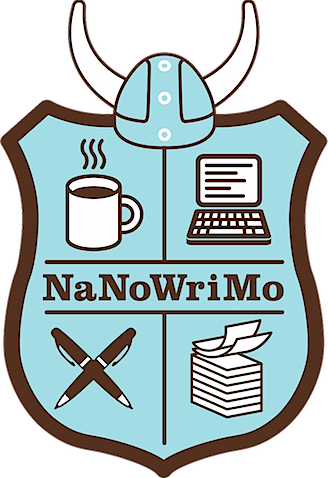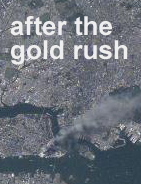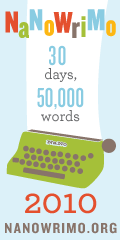NaNoWriMo countdown
By John McDaid | Saturday, 26 October 2013 |
| Image courtesy of National Novel Writing Month. |
Friday marks the beginning of November and the kickoff of National Novel Writing Month (NaNoWriMo), a yearly challenge in which hundreds of thousands of writers aim to crank out 50,000 words in 30 days. Since the program started in 1999, organizers say, more than 250 writers have seen their novels published, including Sara Gruen’s Water for Elephants, Erin Morgenstern’s The Night Circus, Hugh Howey’s Wool, Rainbow Rowell’s Fangirl, Jason Hough’s The Darwin Elevator, and Marissa Meyer’s Cinder.
But the real aim of the event is encouraging creativity and participation. Last year, according to the event's organizers, 341,375 people signed up on six continents, and even more are anticipated to start on Friday. More than 80,000 students and educators will participate in the "Young Writers Program" which is supported with free classroom materials. And it's not just a virtual experience: nearly 700 regional leaders will hold write-ins at libraries, coffee shops, and other locations around the world.
"NaNoWriMo is an unbeatable way to write the first draft of a novel because it's such a powerful antidote to that horrible foe of creativity: self doubt," Grant Faulkner, the project's executive director, said in a release. "NaNoWriMo is a rollicking conversation about all aspects of writing, and an invitation to dare to do what seems impossible. As many NaNoWriMo writers have discovered, the best way to learn to write a novel is by simply plunging in to write a novel."
Once again, I'll be taking part, and reporting my progress in that widget over in the right-hand sidebar (or underneath the post, if you're reading on a phone. Yay responsive design.)
While I haven't won since 2009 — honestly, haven't even come close — I'm feeling good about this year. Have a story I started over the summer at my yearly writing workshop at Toronto's Artscape Gibraltar Point which has extruded all sorts of limbs and pseudopods as I've continued to noodle with it in the notebook, and I'm thinking it will turn into a novella-kind-of-thing that might benefit from a 50K length.
The project is called "After the Gold Rush," and it's a time travel story set in New York City in September, 2001. Here's the open:
 |
| Photo courtesy NASA. |
It would always be the sky she remembered from that morning, a preternatural blueness that stilled her to a breathless gape as she slipped out, morning coffee in hand, to the tiny patio overlooking Washington Street. The sun was up somewhere over the East River and Brooklyn, and the invisible roar of West Street traffic bounced off buildings, muted and out of phase. But it was the sky that held Bernadette captive: a late-summer azure that poured through the skyscrapers all the way down to ground level, soaking the waking world. She felt the pebbly paving bricks on her bare feet and sank into that depthless blue, savoring the caffeine buzz rising in her back brain.
Full disclosure: Written partially from a press release. And no, I didn't stick in the quote from Faulkner and the first graf of the story just to boost my word count. Although that is good practice...


 With a day to spare, and just 50 words of headroom, I crossed the finish line of the National Novel Writing Month (NaNoWriMo) at 12:05 this morning, certifying my scrambled manuscript for the alternate history novel "Fist of the Ape," written in the past thirty days. I won't pretend it was easy, nor that it would have been possible without the support of my family, friends, and the awesome Wrimos in Rhode Island and beyond.
With a day to spare, and just 50 words of headroom, I crossed the finish line of the National Novel Writing Month (NaNoWriMo) at 12:05 this morning, certifying my scrambled manuscript for the alternate history novel "Fist of the Ape," written in the past thirty days. I won't pretend it was easy, nor that it would have been possible without the support of my family, friends, and the awesome Wrimos in Rhode Island and beyond.